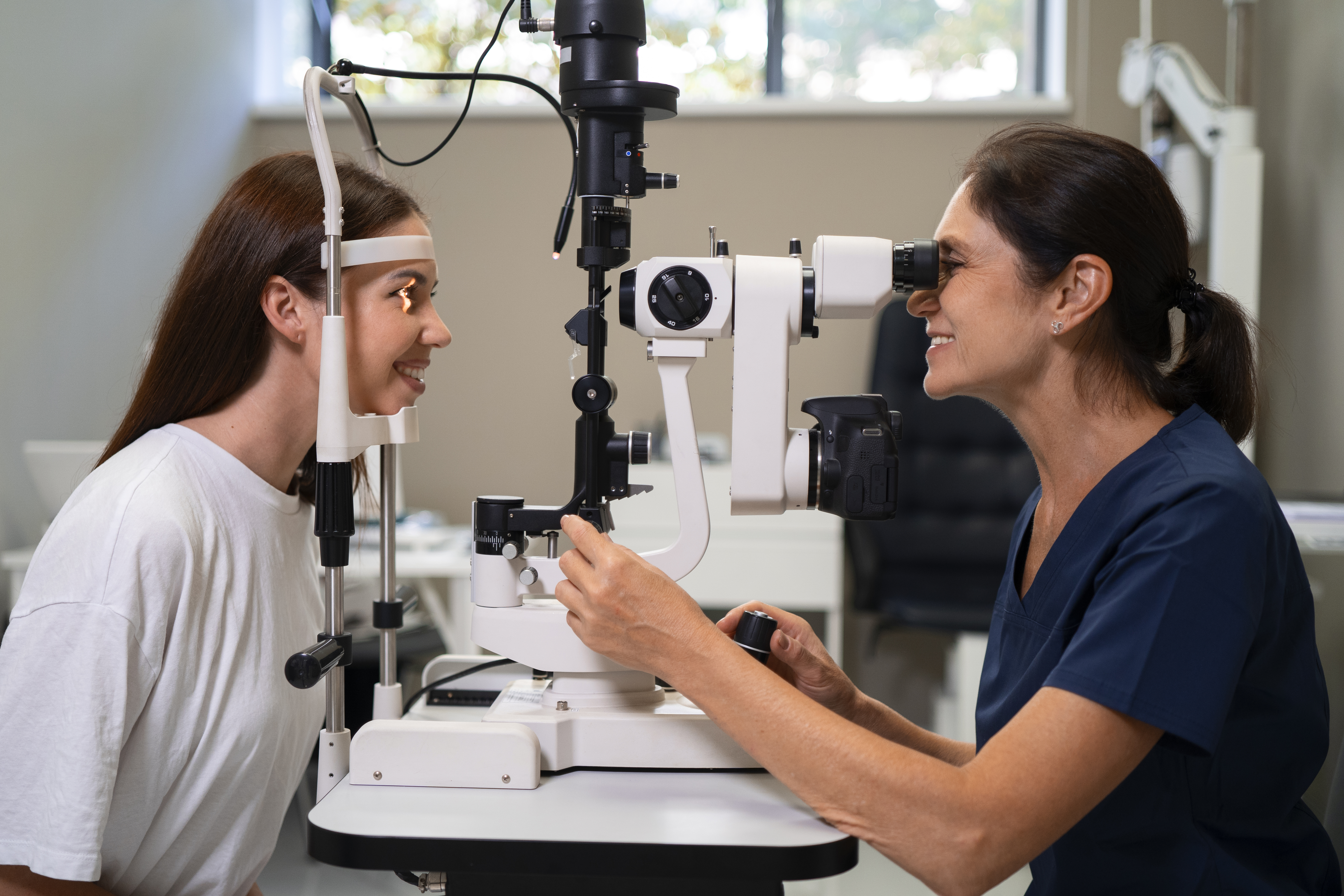Welcome to Our Health Center
Our hospital is committed to providing comprehensive, patient-centered care through advanced medical services, experienced professionals, and a dedicated approach. We place your health and well-being at the center of everything we do.


Medical Services
MENTAL HEALTH AND EMOTIONAL SUPPORT
Good mental health is an essential component of our overall health and well-being. It is necessary for successfully managing our lives and provides us with the emotional and spiritual skills to enjoy life and face challenges and disappointments. According to the WHO, “Mental health is a state of well-being in which the individual realizes their own abilities, can cope with the normal stresses of life, can work productively and fruitfully, and is able to contribute to their community.”
Having a mental health problem is no different from having a physical health problem. It’s important to recognize the symptoms, find ways to treat them, and take steps to prevent the problem from returning. Ignoring mental health issues in yourself or others won’t make them go away.
PREVALENCE OF MENTAL DISORDERS
Anyone can suffer from mental health issues. Mental disorders know no social or economic boundaries. Mental and behavioral disorders affect 25% of people at some point in their lives. That means 1 in every 4 people will experience a mental disorder during their lifetime. Currently, around 450 million people in the world suffer from mental health problems.
Four out of the ten leading causes of disability worldwide are neuropsychiatric disorders. Anxiety and mood disorders are the most common mental disorders globally.
It is estimated that depression currently affects 350 million people worldwide. 1 in 10 people suffer from major depression. In 2004, depression was the third leading cause of global disease burden, and by 2030, it is expected to be the main contributor to the global disease burden (WHO, 2008).
ANXIETY
Anxiety is a feeling of worry or fear about something. It is a natural human emotion, usually followed by calmness and relief. Small amounts of worry and fear can help protect us from danger. However, sometimes anxiety makes us feel like things are worse than they are and can become overwhelming. Constant worry isn’t good for our mental health. If anxiety stops you from doing the things you enjoy, or if you feel excessive worry and panic in everyday situations, it’s important to seek support.
DEPRESSION
It’s okay to feel down sometimes. There isn’t always a clear reason for a bad mood. It’s completely normal to feel off or lose interest in activities that usually bring joy. But if the bad days outnumber the good ones, you may be experiencing depression. Contrary to common belief, depression is not weakness or laziness that you should simply get over. It is a mental health condition that can affect anyone at any age and any point in their life. It may occur without any clear reason or be triggered by difficult experiences. Even people who appear lucky or happy on the outside can be affected.
Remember, even in the darkest times, you should love and value yourself—and the best way to do that is to ask for help. If you think you are struggling with depression, there are support options available. You can talk to someone you trust— a friend, family member, teacher, or school counselor. You can also seek help from your family doctor.
PANIC ATTACKS
A panic attack is an intense feeling of fear and anxiety. It often occurs when you are very stressed or worried about something in your life. It happens when you suddenly become so overwhelmed that it feels almost impossible to slow your heart rate and breathing.
During panic attacks, these feelings come on suddenly and are often accompanied by strong physical symptoms like dizziness, shortness of breath, and rapid heartbeat. Sometimes, you may feel like something terrible is about to happen, even if there is no real danger. If you experience panic attacks, remind yourself that the feeling is temporary—try to remember that panic attacks always pass and you are not in danger. Don’t forget that the physical sensations are caused by the release of adrenaline. During this state, be patient and wait for your adrenaline levels to drop.
Panic attacks can happen in stressful situations or randomly in normal circumstances. This condition may feel frightening. A person might feel detached from their mind, body, or surroundings. However, it’s important to know that panic attacks don’t cause physical harm. You can also seek help from your family doctor. If no physical condition is found to explain your symptoms, they may refer you to a mental health professional.
STRESS
Stress is what we feel when we are worried, uncomfortable, or under pressure from something. Everyone experiences stress from time to time, but when it becomes too much or lasts too long, it can start to harm us. Stress happens when you feel overwhelmed or unable to cope with mental or emotional pressure.
Stress can affect us physically. Sometimes your body may feel tense, your heart may beat faster, and it might be harder to sleep. A small amount of stress can be helpful and even motivate us to achieve goals, like taking a test or giving a speech. But too much stress can affect our ability to do daily things like schoolwork, sleeping, doing things we enjoy, or how we interact with others.
Most people experience stress now and then. For young people, it's important to remember that your body and brain are developing rapidly. There are many tips to manage stress, but if it becomes too hard to handle or lasts too long, then seek support—a psychologist is a great place to start. Whether you are dealing with daily challenges or a unique problem, asking for help and practicing self-care are essential steps toward improvement. Seeking help is a sign of strength—it shows self-awareness and courage to ask for support during difficult times.

EYE HEALTH CARE – WHAT CAUSES BLINDNESS?
EYE HEALTH CARE
If you are over the age of 60, it’s helpful to be aware of age-related macular degeneration (AMD). It is the most common cause of vision loss in people in this age group. Although it is not painful, AMD can gradually damage your central vision. AMD occurs when the cells in the center of your retina (macula) are damaged over time. There are two types of AMD: wet and dry. Dry AMD is more common but less severe. An early sign of wet AMD is straight lines appearing wavy. With dry AMD, you may initially experience blurred or distorted central vision. Risk factors for AMD include smoking or having a family history of the condition.
2. GLAUCOMA
Glaucoma is a group of diseases that can damage the optic nerve at the back of your eye. About half of the people with glaucoma are unaware they have it because it progresses very slowly. It first affects your peripheral (side) vision and can eventually lead to blindness. Researchers are not exactly sure what causes glaucoma.
It may be linked to high eye pressure, but people with normal eye pressure can also develop it. Regular eye exams every 1–2 years can help doctors detect it early.
Risk factors for glaucoma include:
. A family history of glaucoma
. Being over 60 years old
. Being over 40 years old (for some groups)
3. CATARACTS
A cataract is a clouding of the lens caused by proteins in one or both eyes. These proteins form a dense area, making it difficult for the lens to send clear images to other parts of the eye.
Cataracts are a common and vision-threatening eye condition. The National Eye Institute estimates that by the age of 80, half of adults in the United States will have cataracts or cataract surgery in one or both eyes.
Risk factors for cataracts include:
. Aging
. Smoking
. Alcohol use
. Prolonged exposure to sunlight
. Diabetes
4. DIABETIC RETINOPATHY
People with diabetes are at risk of developing diabetic retinopathy, including those with type 1, type 2, or gestational diabetes (during pregnancy).
High and frequent blood sugar levels can damage blood vessels throughout your body, including the small vessels in your retina, the light-sensitive area at the back of your eye. These blood vessels may leak or grow abnormally, leading to vision loss and eventually blindness.
5. AMBLYOPIA
More commonly known as lazy eye, amblyopia usually affects only one eye.
It typically begins in childhood when your brain has difficulty interpreting information from one of your eyes. Over time, the stronger eye becomes dominant while the weaker one deteriorates. Many parents are unaware their child has the condition until it is diagnosed by a doctor.
RISK FACTORS FOR AMBLYOPIA INCLUDE:
Family history of:
. Amblyopia
. Cataracts
. Other eye conditions
. Low birth weight or premature birth
. Developmental disabilities
6. STRABISMUS
Amblyopia often occurs with strabismus (crossed eyes), though it can also occur without it. Muscles surround your eyes, allowing them to move and focus. When they don’t align properly, the vision in both eyes does not match up.
This causes the brain to rely on one eye more than the other. Treatment is needed to help the eyes work together. Known causes of strabismus include refractive error or cranial nerve palsy, but risk factors include:
. Family history of strabismus
. Other eye conditions
. Eye or brain injury
. Having Down syndrome or cerebral palsy
OTHER CAUSES
Other common causes of blindness include uncorrected refractive errors and diabetic retinopathy. In fact, uncorrected refractive error is among the leading causes of blindness.
Some less common causes include:
Additional Causes
. Eye injuries
. Brain injuries
. Complications from eye surgery
. Genetic disorders
. Trachoma, a chlamydia infection in the eye
. Tumors
. Stroke
. Retinal detachment
. Severe eye infections
. Retinitis pigmentosa (RP)

Medical Rehabilitation
Physical therapy, psychomotor therapy, and hydrotherapy.
Physiotherapy is a service that aims to rehabilitate and improve the quality of life for individuals with movement disorders and disabilities, including emotional and psychosocial difficulties.
Physiotherapy is a service that aims to rehabilitate and improve the quality of life for individuals with movement disorders and disabilities, including emotional and psychosocial difficulties.
This service can be offered to anyone with these difficulties from an early age, using a wide variety of methods to treat congenital or acquired neuromuscular and skeletal developmental disorders. Treatment includes therapeutic exercises, neuromuscular re-education, electrical muscle stimulation, and specific exercises. The treatment focuses on improving motor skills, balance, and movement coordination.
CHRONIC DISEASES
WHAT ARE CHRONIC DISEASES?
Chronic diseases are health conditions that last for a long period, usually more than three months, and often progress slowly over time. These diseases do not go away on their own and typically require ongoing medical treatment, long-term management, and lifestyle changes.
Common chronic diseases include diabetes, heart disease, hypertension, asthma, rheumatic diseases, chronic lung diseases (like COPD), and cancer.
Effective management of chronic diseases includes medical treatment, follow-up with professionals, healthy nutrition, physical activity, and controlling risk factors such as smoking or stress.
Cardiovascular diseases include conditions affecting the heart and blood vessels and are the leading cause of death globally.
DIABETES
Diabetes is a metabolic disease characterized by high blood glucose levels due to a lack of insulin or resistance to it. Type 1 is autoimmune in nature, while Type 2 is related to lifestyle.
Management includes healthy eating, physical activity, glucose monitoring, and medication.
CHRONIC RESPIRATORY DISEASES
These include chronic bronchitis, asthma, and COPD. They affect breathing and worsen over time.
Management includes inhalers, avoiding triggers, and oxygen therapy.
CANCER
Cancer is characterized by uncontrolled cell growth and spreading to other parts of the body. The most common types include breast, lung, prostate, and skin cancer.
Early diagnosis and modern treatments have significantly improved survival rates.
NEUROLOGICAL DISEASES
These affect the brain, spinal cord, and nerves, such as epilepsy, Parkinson’s disease, multiple sclerosis, and Alzheimer’s disease. They impact functions such as memory and movement.
Treatment includes pharmacological therapy and rehabilitation.
MUSCULOSKELETAL DISEASES
These affect joints, bones, and muscles. Examples include rheumatoid arthritis, osteoarthritis, and osteoporosis.
Management includes physical therapy, medication, and surgical interventions when necessary.
KIDNEY DISEASES
These occur when kidney function deteriorates over time. Causes include diabetes and hypertension.
Management involves controlling the underlying disease and regular medical follow-up.
RISK FACTORS FOR CHRONIC DISEASES
UNHEALTHY LIFESTYLE
Unhealthy eating and lack of physical activity are major risk factors for many chronic diseases.
SMOKING AND ALCOHOL CONSUMPTION
Smoking affects the lungs, heart, and increases cancer risk. Alcohol affects the liver and other organs, worsening overall health.
GENETIC FACTORS AND FAMILY HISTORY
A family history of chronic diseases increases the risk of developing them, but prevention and regular checkups can help.
STRESS AND MENTAL HEALTH
Chronic stress affects blood pressure, the immune system, and can worsen chronic illnesses.
ENVIRONMENTAL FACTORS
Pollution, chemicals, pesticides, and heavy metals contribute to the occurrence of respiratory diseases, cancer, and neurological disorders.

WHAT ARE CHRONIC DISEASES?
Chronic diseases are health conditions that last for a long period of time, usually more than three months, and often progress slowly over time.
These diseases do not go away on their own and typically require ongoing medical treatment, long-term management, and lifestyle changes.
The most common chronic diseases include diabetes, heart disease, hypertension, asthma, rheumatic diseases, chronic lung diseases (such as COPD), and cancer.
They can significantly affect quality of life by limiting daily activities and increasing the need for healthcare. Effective management of chronic diseases involves a combination of medical treatment, regular follow-ups with health professionals, healthy nutrition, physical activity, and control of risk factors such as smoking or stress.
Cardiovascular diseases include a group of conditions affecting the heart and blood vessels, such as coronary artery disease, heart failure, arrhythmias, and hypertension. They are the leading cause of death worldwide and often develop due to factors like high cholesterol, high blood pressure, smoking, lack of physical activity, and poor diet. These diseases may progress silently for years without obvious symptoms until a serious event such as a heart attack or stroke occurs. Prevention and management require an integrated approach including regular monitoring, lifestyle changes, and sometimes medication to control risk factors.
DIABETES
Diabetes is a metabolic disease characterized by high blood glucose levels due to insufficient insulin production or the body's resistance to it. There are two main forms: type 1, which usually appears at a young age and is autoimmune in nature, and type 2, which is more often related to lifestyle and usually appears in adults.
Without proper treatment, diabetes can cause serious complications such as damage to the eyes, kidneys, nerves, and heart. Management requires a careful balance of healthy eating, physical activity, regular glucose monitoring, and use of medications or insulin when necessary.
CHRONIC RESPIRATORY DISEASES
Chronic respiratory diseases include conditions affecting the airways and lungs, such as chronic bronchitis, asthma, and chronic obstructive pulmonary disease (COPD). These conditions impair the body’s ability to efficiently take in oxygen and usually worsen over time.
The main risk factors include smoking, air pollution, and exposure to harmful chemicals in the workplace. Common symptoms include persistent cough, difficulty breathing, and excessive mucus production. Management includes the use of inhalers, avoiding triggers, and sometimes oxygen therapy.
CANCER
Cancer is a group of diseases in which cells in the body begin to grow uncontrollably, invading surrounding tissues and sometimes spreading to other parts of the body (metastasis). The most common types include breast, lung, prostate, colorectal, and skin cancer.
Causes vary and include genetic, environmental, lifestyle-related, and certain viral infections. Early detection through preventive screenings, accurate diagnosis, and advanced treatments such as surgery, chemotherapy, and radiotherapy have significantly improved patient survival and quality of life.
NEUROLOGICAL DISEASES
Chronic neurological diseases include disorders affecting the brain, spinal cord, and nerves, such as epilepsy, Parkinson’s disease, multiple sclerosis, and Alzheimer’s disease. They impact essential functions like movement, memory, speech, and sensory perception.
These conditions often progress over time and can greatly affect daily life. Treatment focuses on slowing disease progression, symptom control, and improving neurological function through medication and rehabilitation.
MUSCULOSKELETAL DISEASES
These diseases affect the joints, bones, muscles, and surrounding tissues, with common examples being rheumatoid arthritis, osteoarthritis, and osteoporosis.
They cause chronic pain, limited mobility, and loss of function in various parts of the body. Musculoskeletal diseases are among the most common causes of long-term disability, especially in the elderly. Management includes physical therapy, anti-inflammatory medications, and in advanced cases, surgical intervention to replace joints.
KIDNEY DISEASES
Chronic kidney disease occurs when kidney function gradually declines over time, leading to an inability to filter waste from the blood and balance body fluids. The most common causes include diabetes and hypertension. In early stages, the disease may not show noticeable symptoms, but over time it can lead to fatigue, swelling, urination problems, and in advanced stages, the need for dialysis or a kidney transplant. Prevention and management involve controlling underlying diseases and regular medical monitoring.
RISK FACTORS FOR CHRONIC DISEASES
UNHEALTHY LIFESTYLE
One of the most important contributors to the development of chronic diseases is lifestyle. Unhealthy eating habits, excessive intake of saturated fats, sugars, and processed foods increase the risk of diabetes, heart disease, and obesity.
Lack of physical activity is also a major factor. A sedentary lifestyle weakens the cardiovascular system, negatively affects blood glucose levels, and can lead to weight gain and weakening of muscles and bones.
SMOKING AND ALCOHOL CONSUMPTION
Smoking is a leading cause of chronic respiratory diseases, heart diseases, and certain cancers. The chemicals in smoke damage body cells and impair lung function.
Alcohol, especially when consumed excessively and regularly, affects the liver, pancreas, brain, and increases the risk of cancers of the mouth, esophagus, and liver. It also interferes with the control of diabetes and blood pressure.
GENETIC FACTORS AND FAMILY HISTORY
Genes play a significant role in the predisposition to certain chronic diseases. People with a family history of diseases such as diabetes, cancer, or heart disease are at higher risk of developing these conditions.
Although genes cannot be changed, knowing your family history allows for earlier intervention and more effective preventive measures to avoid disease progression.
STRESS AND MENTAL HEALTH
Chronic stress is closely linked to the development of many chronic conditions such as hypertension, cardiovascular diseases, and autoimmune disorders. It negatively impacts the immune system and worsens overall health.
Mental health is also essential in managing chronic diseases. Depression and anxiety can affect treatment adherence, nutrition, and self-care.
ENVIRONMENTAL FACTORS AND EXPOSURE TO HARMFUL SUBSTANCES
Air pollution, industrial chemicals, pesticides, and heavy metals are environmental factors that can contribute to the development of chronic diseases. Long-term exposure to them is linked to respiratory diseases, cancer, and neurological disorders.
Poor working conditions, lack of clean air, or exposure to harmful fumes at home (such as burning wood or gas in enclosed spaces) significantly increase the risk of serious health problems.

Therapy and Counseling Services
Whether you're facing relationship challenges, career-related stress, or personal obstacles, our licensed counselors provide a judgment-free environment to explore your concerns and build healthy coping strategies.
Book an Appointment
Vlerësim Psikiatrik dhe Menaxhim me Medikamente
Specialistët tanë të shëndetit mendor ofrojnë vlerësime diagnostikuese dhe menaxhim me medikamente për çrregullime si çrregullimi bipolar, PTSD dhe çrregullime të humorit, duke siguruar plane trajtimi të sigurta dhe efektive që mbështesin rikuperimin.
Rezervo Takim
Mbështetje për Kriza të Shëndetit Mendor 24/7
Nëse ju ose një i afërm jeni duke përjetuar një krizë të shëndetit mendor, ekipi ynë është i disponueshëm gjatë gjithë kohës. Ne ofrojmë ndihmë të menjëhershme, shërbime ndërhyrëse dhe referime për t’u siguruar që të merrni kujdesin urgjent që ju nevojitet.
Rezervo Takim
Our Medical Camp

“Eat healthy and it will reward you”

nutritionist
Our Specialists
Our Blog News






